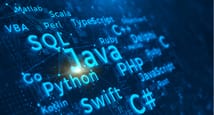- Introduction to Networks
- Network Types
- The Internet and the DNS Server
The New CCNA Exam v1.0 (200-301) By Hexa CCIE Khawar Butt
Prepare for the CCNA test by attending the Udemy-offered The New CCNA Exam v1.0 (200-301) By Hexa CCIE Khawar Butt ...Read more
Online
₹ 449 2699
Quick Facts
| particular | details | |||
|---|---|---|---|---|
|
Medium of instructions
English
|
Mode of learning
Self study
|
Mode of Delivery
Video and Text Based
|
Course overview
The New CCNA Exam v1.0 (200-301) By Hexa CCIE Khawar Butt Course is a short certification developed by Khawar Butt to introduce the students to various concepts of networking and prepare and clear the New CCNA (Cisco Certified Network Associate) Exam v1.0 (200-301). The curriculum will cover a whole range of topics needed to prepare for the CCNA including DMVPN, Wireless Technologies, IPSec, IPv6, and the like. The New CCNA Exam v1.0 (200-301) By Hexa CCIE Khawar Butt online course, provided by Udemy, will go through Cisco Router IOS, Routing, Switching, Cisco Switching Technologies, etc.
The New CCNA Exam v1.0 (200-301) By Hexa CCIE Khawar Butt certification recommends the prospective candidates to have a basic understanding of Computers to make most of the course. By providing the fee prescribed by Udemy, the learners can join the programme.
The highlights
- Online course
- Downloadable resources
- Full lifetime access
- Access on mobile and TV
- Certificate of completion
- English videos
- 30-Day Money-Back Guarantee
Program offerings
- 51 hours on-demand video
- 122 downloadable resources
- Full lifetime access
- Access on mobile and tv
- Certificate of completion
- English videos
Course and certificate fees
Fees information
certificate availability
Yes
certificate providing authority
Udemy
Who it is for
What you will learn
After the completion of The New CCNA Exam v1.0 (200-301) By Hexa CCIE Khawar Butt online certification, the students will be able to study IP Services such as DHCP, DNS, NTP, FHRP, NAT, CDP, and LLDP, networking, Automation, and Network Programmability, Router Maintenance, static Routing, and OSPF.
The syllabus
Overview of Networking
IP Addresssing [Classes, Private Addressing, Subnetting] (9 Videos - 9 Existing)
- IP Addressing
- IP Address Classes
- Private Addressing
- Subnetting
- Class C - Subnetting Examples
- Class B - Subnetting Examples
- Class A - Subnetting Examples
- Supernetting
- Supernetting Examples
Reference Models [OSI and IP Model] & TCP / UDP Protocols
- Networking Models
Initializing a Cisco Router
- Router Components
- Basic Router Configuration
- Initial Configurations
- Configuring Terminal history
- Configuring a Router Banner
- Working with the Configuration Files
- Securing the Router Console Access
- Configuring Alias
WAN Connections [PPP, Authentication, MLPP]
- Serial Interface Protocols
- Configuring and Verifying Point-to-point HDLC Connections
- Configuring and Verifying Point-to-point PPP Connections
- Configuring PPP Authentication using PAP
- Configuring PPP Authentication using CHAP
- Configuring PPP Multilink
Remote Management [Telnet SSH]
- Remote Management
- Configuring Telnet using a Password
- Configuring Telnet using a Username and Password
- Configuring SSH using a Username and Password
IP Routing
- Routing Basics
- Distance Vector Routing Protocol
- Link State Routing Protocol
- Configuring Static Routes
- Configuring Default Routes
- Configuring Floating Static
- OSPF Overview
- Configuring OSPF in a Single Area on a Point-To-Point Link
- Configuring OSPF in a Single Area on an Ethernet Link
- OSPF - Calculating Metrics
- OSPF Multi-Area Overview
- Configuring OSPF is a Multi-Area Network
- FHRP Services
- HSRP
- VRRP
IPv6 [Addressing, Static Routes, OSPFv3]
- IPv6 Addressing
- IPv6 Addressing Types
- IPv6 Address Assignments from ISP and Subnetting
- IPv6 Address Assignment using Manual Mechanism
- IPv6 Address Assignment using SLAAC
- Configuring IPv6 Static Routes
- Configuring IPv6 Default Route
- Configuring OSPFv3
LAN Switching
- Switching Overview
- VLANs & Port Types
- VLAN Trunking Protocol (VTP)
- VLAN, VTP & Port Types Lab
- Inter-VLAN Routing
- Physical - To - Logical Mapping
- Spanning-Tree Protocol (STP)
- STP Root Switch
- STP PortFast
- STP BPDU Guard
- STP BPDU Guard Lab
- EtherChannels - Port Channels
- EtherChannel - Static Mode
- EtherChannel - LACP
Infrastructure / IP Services [DNS, DHCP Server, NTP, QoS]
- DHCP Server
- Configuring a Router as a DHCP Server
- Configure a Router as a DHCP Relay Agent
- Configuring a Router as an HTTP-HTTPS Server
- Configuring a Router as a DNS Server
- Network Address Translation (NAT)
- Dynamic NAT
- Static NAT
- Dynamic PAT
- Static PAT
- Network Time Protocol (NTP)
- Network Time Protocol Lab
- Quality of Service (QoS)
- QoS - Policing
- QoS - Bandwidth Reservation & Prioritization
Router Maintenance
- Backing up the configuration to a TFTP Server
- Restoring a configuration from a TFTP Server
Wireless Networking
- Wireless Networking Overview
- Initializing the WLC from the CLI
- Configuring a Controller-based WLAN
Security Fundamentals
- Overview of Site-To-Site VPNs using Crypto Maps
- GRE Site - To - Site VPN
- GRE Over IPSec
- Tunnel-Interface Based IPSec - S-VTI
- Access Control Lists Overview
- Standard Numbered ACL
- Standard Named ACL
- Extended Numbered ACL
- Extended Named ACL
- Time-based ACL
- IPv6 Access Lists
- Port Security
- Port Security - Lab
- Configuring DHCP Snooping
- Configuring ARP Inspection
Additional Labs
- RIPv2 Overview
- Configuring Basic RIP v2
- RIP v2 - Passive Interfaces
- RIP v2 - Auto-Summarization
- EIGRP Overview
- Configuring Basic EIGRP
- EIGRP - Passive Interfaces
- EIGRP - Auto-Summarization
- Calculating EIGRP Metrics
- EIGRP - Load Balancing
- BGP Overview
- Configuring eBGP
- WAN Technologies Overview
- MPLS Unicast Routing
- Multi-Point GRE- DMVPN
- PPP Over Ethernet (PPPoE)


 Brochure
Brochure Enquire
Enquire











